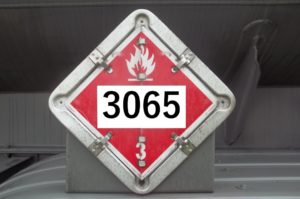Question (12.12.17):
I have a hopefully quick question – a non-hazmat employee can sign for a delivery of a hazmat, correct? They are not unloading, just receiving hazmat to the site and signing for the load.
Contact me with any questions you may have about the transportation of hazardous materials by air, highway, vessel, or rail International and Domestic Daniels Training Services, Inc. 815.821.1550 |
My answer (12.12.17):
Correct. It may be subject to interpretation, but the receipt of Hazmat Shipping paper is not subject to regulation. The physical unloading of the vehicle is subject to regulation. Allow me to explain further.
A more complete answer can be found in the Hazardous Materials Regulations (HMR) of the Pipeline and Hazardous Materials Safety Administration within the U.S. Department of Transportation (USDOT/PHMSA). At 49 CFR 171.1 USDOT/PHMSA explains the applicability of the HMR to persons and functions. Applicable functions include:
- Each person who manufactures, fabricates, marks, maintains, reconditions, repairs, or tests a packaging for use in the transportation of hazardous materials.
- Pre-transportation functions. Functions that must take place before the HazMat is offered for transportation. This includes preparing a shipping paper. The pre-transportation functions are usually performed by the person who offers the HazMat for transportation, aka: the shipper.
- Transportation of the hazardous material in commerce, which includes:

The unloading of a hazardous material is subject to the HMR - Loading the HazMat prior to its movement. This includes a package or container or the filling of a bulk packaging incidental to its movement.
- Movement of the HazMat by rail car, aircraft, motor vehicle, or vessel. This function is performed by the carrier.
- Storage of the HazMat between the time the carrier takes physical possession of it and its delivery to the indicated destination. This will not occur if the HazMat is delivered directly to its destination.
- Unloading of the HazMat (package, container, or unload of bulk packaging) at the assigned destination when performed by carrier personnel or in the presence of carrier personnel.
- And that’s it! There is no regulated function entitled “post-transportation function” which may include signing the shipping paper.
So, if the act of signing a HazMat shipping paper is not a function subject to the hazardous materials regulations, it isn’t a function that requires trained HazMat Employees.
Q. Is it even necessary for the destination facility (aka: the receiver) to sign the HazMat shipping paper?
A. No. The regulations for preparation and retention of HazMat shipping papers §172.201 require the shipper to retain a copy for at least two years. At 177.817(f) the carrier is instructed to retain a copy for at least one year. There is no requirement for the destination facility (sometimes identified as the consignee) to retain a copy at all and as a matter of fact, they may never get one!
Daniels Training Services, Inc. 815.821.1550 |
That did it!
A simple question. A simple answer. But a complex explanation. Make certain you have identified everyone at your company who has a direct effect on the safe transportation of hazardous materials. If they do, they are likely a HazMat Employee. And if they are, they must receive initial (within 90 days) and recurrent (within three years) HazMat Employee training.





